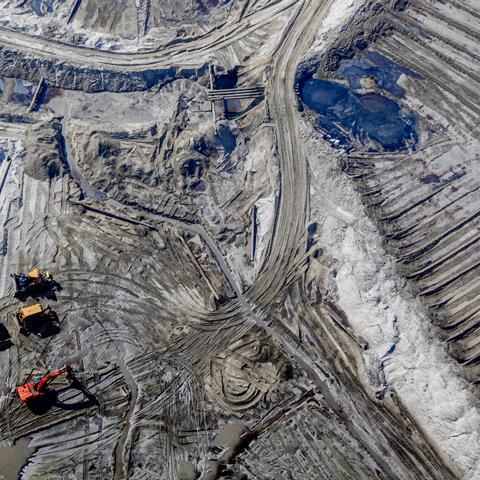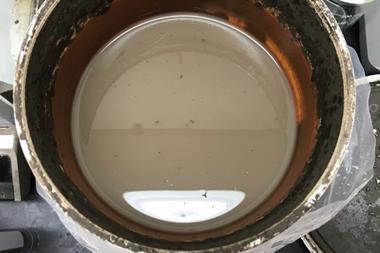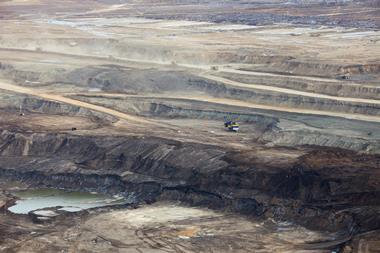Carbon-containing air pollution caused by vast oil tar sands operations has been underreported by up to 6300%. That’s according to a study which used a new technique to measure the total organic carbon emitted into the atmosphere from facilities at Athabasca oil sands in Alberta, Canada. The approach could help fill gaps in reporting of hydrocarbon emissions across the petrochemical sector, as well as other industries.
Global anthropogenic carbonaceous emissions are chemically complex, spanning a diverse range of molecular sizes and functionalities from volatile organic compounds (VOCs) to semi-volatile organic compounds (SVOCs) and lower-volatility species. Many of them are carcinogenic or harmful to health. However, measuring all of the individual species is not technically, logistically or economically viable. Therefore, only VOCs tend to be routinely measured. The upshot is that emissions from facilities at unconventional petroleum resources such as oil sands, which emit higher levels of SVOCs and secondary pollutants, have not been accurately reported.
A previous study in 2017 had shown large amounts of particulate matter being formed downwind of the Athabasca oil sands, bolstering decades-old complaints from Indigenous communities in the region that toxic emissions were affecting their health. However, it remained unclear as to what precursors were forming this particulate matter and it highlighted a discrepancy between reported emissions of individual species and the diverse amount of secondary products observed.
Now researchers from the same team have returned with new instruments and a new method that measures the total amount of organic carbon present in aerial samples at the same time as individual compounds. ‘We are the first to measure the total gas-phase organic carbon from an aircraft and to derive emissions this way for any facility,’ says John Liggio, a scientist at Canadian government agency Environment Canada who co-led the work. ‘It measures all compounds at once, rather than trying to distinguish individual compounds. But we also measured individual compounds to compare with the total and this was also novel.’
To obtain measurements of total carbon, excluding methane, the researchers conducted 30 flights near facilities in the Athabasca oil sands region. The aircraft was equipped with paired carbon dioxide analysers, one of which had a catalytic converter that turned any carbon-containing gas in the samples into carbon dioxide. This enabled the team to work out how much carbon was in each sample. Back at the lab algorithms were then used to derive the emissions from each facility.
‘The most surprising thing was the sheer magnitude of emissions observed from oil sands operations, compared both to their reported emissions and to the total anthropogenic sources across Canada,’ says Liggio. The results showed that the new measurements exceeded oil sands industry-reported values by 1900% to over 6300%. This means that total facility-wide emissions were equivalent to that from all other sources of emissions across Canada combined, and far surpassed emissions from the largest megacities in the US including Los Angeles.
‘The approaches used by the researchers aren’t necessarily new, but are combined in an innovative way,’ says atmospheric chemist Eloise Marais, who investigates air quality at University College London, UK. ‘There are thousands of unique VOCs and the researchers provide evidence that the unreported VOCs are mostly those with lower volatility than the reported compounds, so are likely to partition to aerosols to contribute to fine particulate matter pollution.’
‘I’m not at all surprised at the conclusions,’ comments Stephen Andrews, who builds analytical instruments for atmospheric chemistry at the University of York. ‘In the UK, even the routinely measured VOC measurements are very sparse – there must be many instances where real-world emissions are much higher than reported.’
‘Future applications can similarly improve emissions reporting across many other anthropogenic sources and locations, says Liggio. ‘Accounting for lifecycle-wide emissions of chemically diverse compound classes via total carbon monitoring presents a vastly simpler approach with inherent mass closure checks for industry, scientists and policymakers alike.’
References
M He et al, Science, 2024, 383, 426 (DOI: 10.1126/science.adj6233)













No comments yet